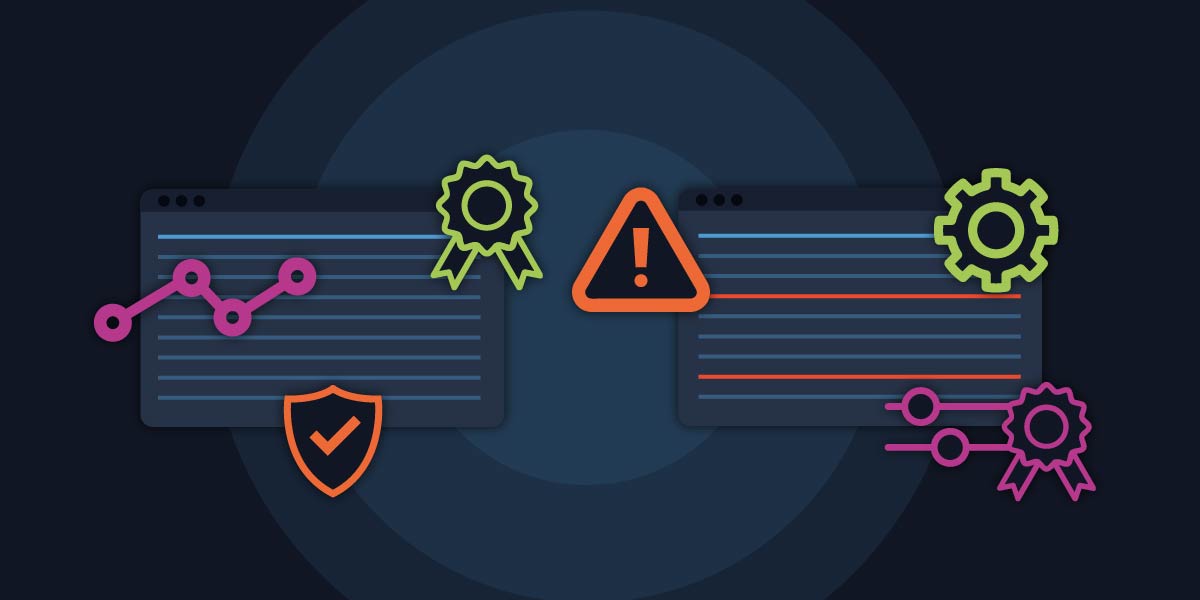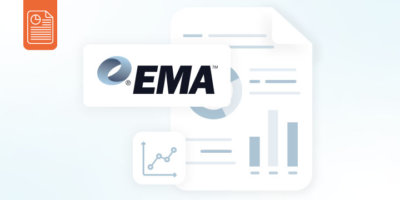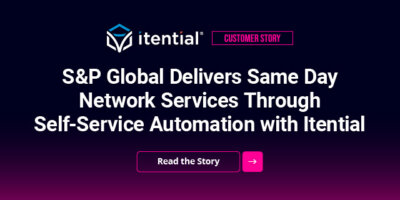How do you feel about the state of your network? The way you feel about your network may not match others in your organization. You may be surprised to know that there is a big disconnect between the way executives and practitioners view their own networks.
Recently, Itential and Enterprise Management Associates (EMA) conducted a large research project, surveying over 1,000 networking professionals. As part of that survey, both IT executives and practitioners were represented with practitioners further broken down by traditional networking pros and DevOps roles with networking as their primary function. When looking at the results through the lens of each role, there are some similarities in responses but a surprising difference in a few key areas.
It’s important to understand these differences as they way network challenges are perceived and ultimately addressed can lead to a sense of either shared success or one of failure, where each group is pointing blame the other. To avoid the latter, let’s take a deeper look at some of the findings to better understand how to bridge that gap and set your team up for success.
Where Executives & Practitioners See Similarities
Before we dive into the differences, it’s important to understand where executives and practitioners do see eye to eye. There are a few areas that provide a solid foundation to begin to come together.
Areas of Concern
All respondents, regardless of their role, reported low satisfaction with current tools and processes for managing configuration, compliance, and overall changes to the network. While it may not be surprising to find a convergence of opinions on this specific topic, it is surprising at the high level of mutual dissatisfaction. The findings indicate that far less than 40% of all respondents are actually satisfied with their current tools and processes.
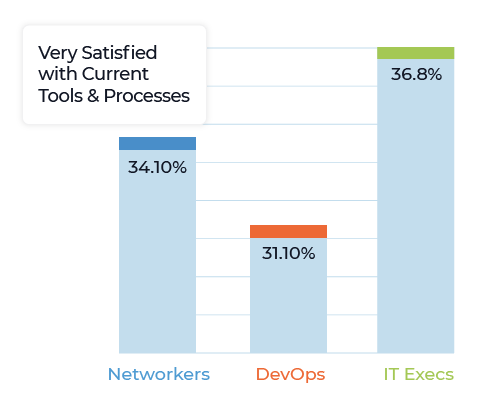
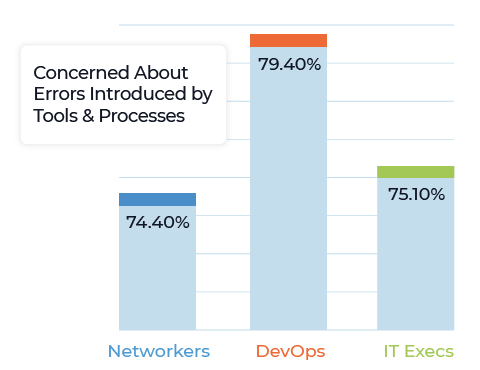
Similarly, every role represented in the survey reported concern that current tools and processes would introduce errors and perhaps security issues. In fact, over 75% of respondents indicated they were concerned about errors from their current tools and processes.
Benefits of Automation Solutions
When asked about the benefits of automating tasks on the network, practitioners and executives alike identified the same top four benefits. While they weren’t in the exact same order, the top four choices remained steady. This indicates that the goals of executives and practitioners with respect to automating on the network do overlap.
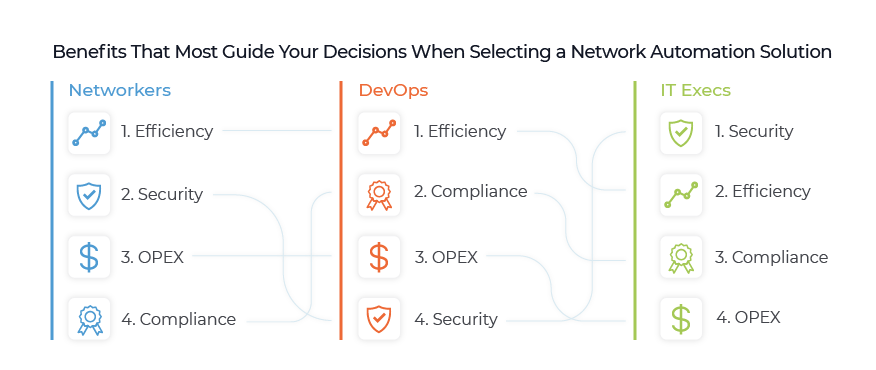
Where Executives & Practitioners Differ on their View of the Network
The results of this survey brought to light a very interesting perspective on where views differ between executives and practitioners.
General State of Configuration on the Network
To get a sense of the state of configuration on the typical enterprise network, we asked a series of questions about auditing configuration compliance in four key network environments; LAN, WAN, Data Center, and Public Cloud. This is where the findings begin to show a large divergence in views about the state of the network. Executives tend to have a much rosier view about their networks’ ability to pass a configuration compliance audit than do practitioners. In general, there is a concerning lack of confidence, but it is particularly acute among practitioners.
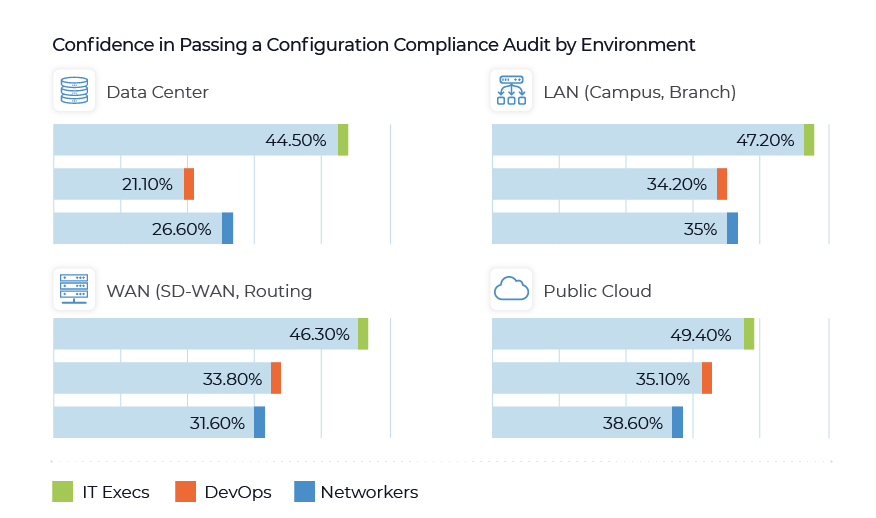
This is concerning because it demonstrates that executives may be too far removed from the practitioners performing day-to-day management of the network to truly understand how dire things really are. It also may indicate that practitioners are not adequately communicating the problems facing the network to their management. Either way, there seems to be a communication gap that could lead to a mismatch in how an automation solution is chosen.
Remember that the benefits to implementing an automation solution are largely aligned, but this shows there is a clear misunderstanding about which challenges the solution should address to achieve those goals, which could lead to failure.
Challenges to Implementing a Network Automation Solution
Another worrying area of divergence is in the perceived challenges an organization faces as it implements a network automation solution. We asked respondents to identify their top challenges to implementing an automation solution from a list of 10. There was some overlap in challenges identified by executives and practitioners. For example, both executives and DevOps practitioners identify old or legacy equipment as a major hurdle to automation. Skills gap (learning to code automation) was identified as a top four challenge by all roles. Similarly, all roles identified implementation time or time to value as a top four challenge.
The most interesting finding, however, was that practitioners identified no/poor automation strategy from leadership team as their number one challenge to successfully implementing an automation solution. Naturally, this was not a top four challenge identified by executives. This single data point is perhaps the most important one we’ve identified as it quantifies what we’ve heard anecdotally from customers for years here at Itential.
Executives tend to think of automation solutions as ways to achieve high-level goals like OPEX reduction or faster time to delivery of services. But practitioners need solutions that help them perform their jobs faster without introducing errors onto the network. Neither is wrong. In fact, they are really two sides of the same coin, but executives must formulate automation strategies that connect the dots between the two. Moreover, they need to ensure that the automation solution they ultimately choose and implement doesn’t burden practitioners further.
We’ve built our network automation products at Itential to support the needs of both executives and practitioners. Our products help practitioners to mitigate the challenges they’re currently facing as they work through backlogs as well as help executives achieve their strategic goals, often without the need for additional headcount or adding more work to already overloaded practitioners.
To learn more about the full findings of this report, you can download the full report here.

